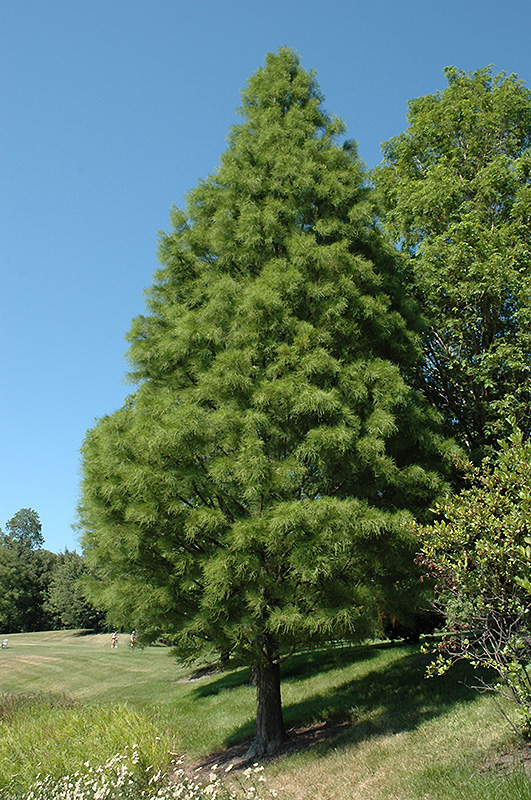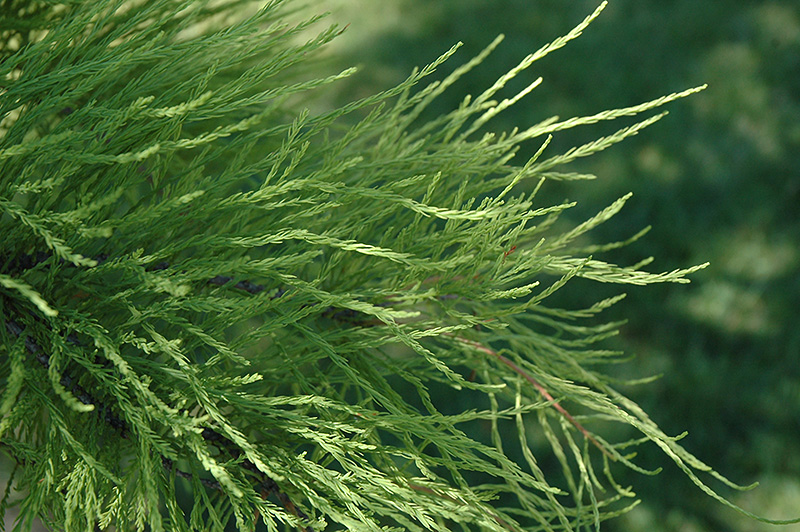
Plant Finder
Pond Cypress*
Taxodium distichum 'var. nutans'
* This is a "special order" plant - contact store for details
Height: 60 feet
Spread: 20 feet
Sunlight:
![]()
Hardiness Zone: 5
Other Names: T. ascendens, Pondcypress
Description:
A genuinely awe-inspring tree for so many reasons; its tall, columnar habit, thread-like foliage held in dense clumps along the ascending branches, turning antique brown in fall, curious knobby knees when planted near water; a tree-lover's tree
Ornamental Features
Pond Cypress is primarily valued in the landscape for its rigidly columnar form. It has emerald green deciduous foliage. The ferny bipinnately compound leaves turn an outstanding harvest gold in the fall. The shaggy antique red bark adds an interesting dimension to the landscape.
Landscape Attributes
Pond Cypress is a dense deciduous tree with a strong central leader and a narrowly upright and columnar growth habit. It lends an extremely fine and delicate texture to the landscape composition which can make it a great accent feature on this basis alone.
This is a relatively low maintenance tree, and is best pruned in late winter once the threat of extreme cold has passed. Deer don't particularly care for this plant and will usually leave it alone in favor of tastier treats. It has no significant negative characteristics.
Pond Cypress is recommended for the following landscape applications;
- Accent
- Shade
- Vertical Accent
Planting & Growing
Pond Cypress will grow to be about 60 feet tall at maturity, with a spread of 20 feet. It has a high canopy with a typical clearance of 7 feet from the ground, and should not be planted underneath power lines. As it matures, the lower branches of this tree can be strategically removed to create a high enough canopy to support unobstructed human traffic underneath. It grows at a slow rate, and under ideal conditions can be expected to live to a ripe old age of 100 years or more; think of this as a heritage tree for future generations!
This tree should only be grown in full sunlight. It is an amazingly adaptable plant, tolerating both dry conditions and even some standing water. It is not particular as to soil type, but has a definite preference for acidic soils, and is subject to chlorosis (yellowing) of the foliage in alkaline soils. It is somewhat tolerant of urban pollution. Consider applying a thick mulch around the root zone in winter to protect it in exposed locations or colder microclimates. This is a selection of a native North American species.
* This is a "special order" plant - contact store for details
This Plant Library is intended for informational purposes only, and is not an online store.

